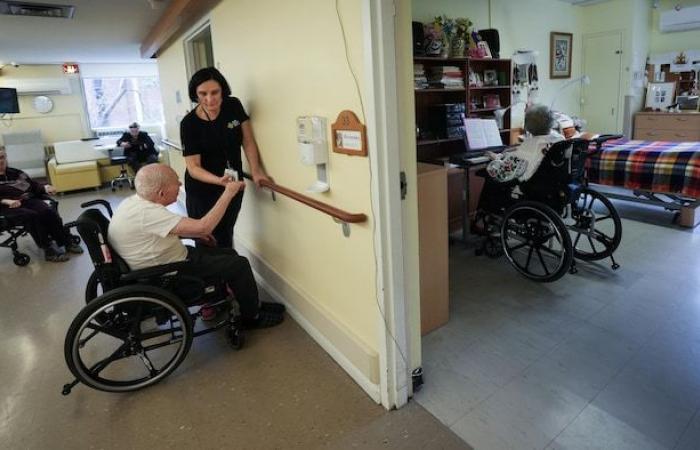Ontario is launching a pilot project to try to resolve a priority problem for admissions to long-term care homes in cultural and linguistic communities.
The problem is a consequence of the passage of the More Beds, Better Care Act of 2022. This allows hospitals to transfer a patient who no longer needs acute care to a long-term care center that they have not chosen, if no place is available in their care homes. choice. The rule has attracted widespread criticism.
It also had repercussions in the dozens of care centers that were created for members of cultural communities, whether Korean, Jewish, French-speaking or others.
Thousands of people are occupying beds in hospitals across the province, waiting to secure a place in a care home. These patients have priority when a place becomes available.
No connection with language and culture
People are placed in care homes without any connection to the language and culture of other residents. Managers of these centers say that patients are transferred to an Italian center without speaking the language, while people who want to live there are sent elsewhere.
If a place becomes available in a Ukrainian center, it will be filled by the first person on the list, even if the second person wants to go to a Ukrainian center.
Open in full screen mode
Currently, if a place becomes available in a Ukrainian health center, the first person on the emergency list will be placed there, even if they have no connection with the culture of that community. (Archive photo)
Photo: The Canadian Press / Nathan Denette
The previous Minister of Long-Term Care, Stan Cho, said in the spring that he was actively seeking a solution.
Her successor, Natalia Kusendova-Bashta, published a proposal to change the regulations. It would allow placement managers to prioritize sending patients from cultural and linguistic communities to homes that correspond to their culture, if they are on the emergency list. These cases are, in large part, patients waiting in hospital for a place in a long-term care center.
Given that the majority of admitted clients come from the “crisis” waiting list rather than other lists, this pilot project is necessary to facilitate the placement of these clients in culturally appropriate long-term care centers, which aim to meet their particular religious, cultural and/or linguistic needs
she said in a written statement.
Additional challenges
Lisa Levin, CEO of AdvantAge Ontario, which brings together non-profit homes, believes the proposed changes will really make life easier for residents, many of whom have dementia.
Often, these patients whose first language is not English will revert to their native language, she explains. So it’s very important that they can be in these homes where the language, the food and the traditions are familiar.
It’s also a challenge for homes that have patients from other cultures – particularly if there are many of them – because they may want a different diet and don’t understand the language. It’s very difficult for everyone.
A spokesperson for the Ministry of Long-Term Care said the pilot project would be limited in duration and include a number of centers, allowing the government to assess whether the changes are working. He did not specify which homes are on the list and how long the project will last.
More details will follow
With information from The Canadian Press






